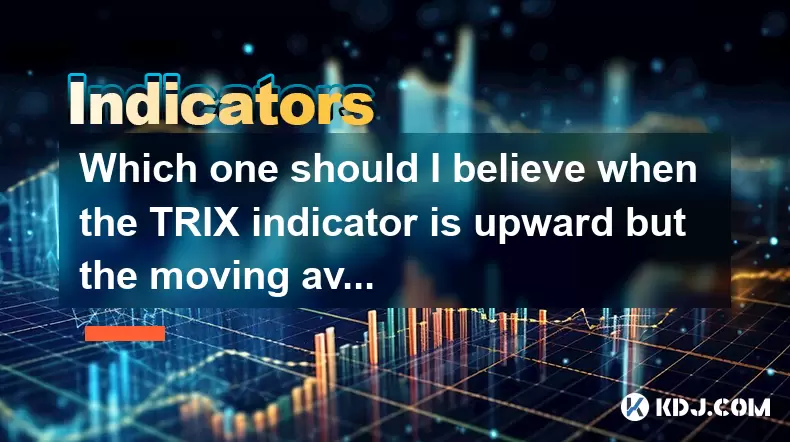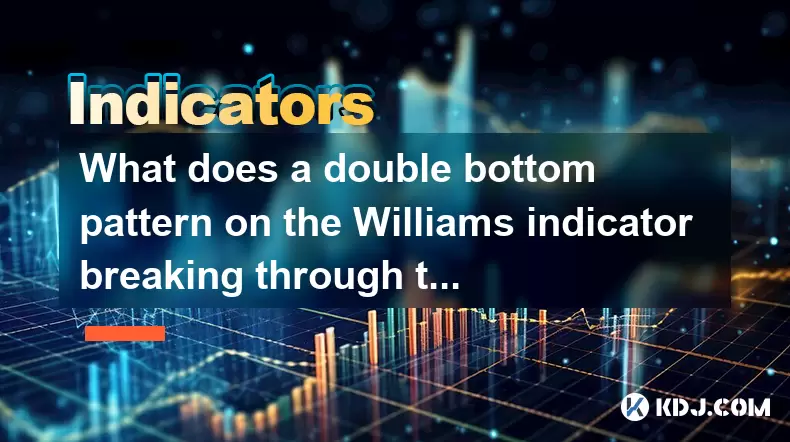-
 Bitcoin
Bitcoin $116400
-0.36% -
 Ethereum
Ethereum $4033
3.40% -
 XRP
XRP $3.302
-1.26% -
 Tether USDt
Tether USDt $1.000
-0.02% -
 BNB
BNB $796.1
1.67% -
 Solana
Solana $177.8
1.89% -
 USDC
USDC $0.9999
0.00% -
 Dogecoin
Dogecoin $0.2314
4.09% -
 TRON
TRON $0.3381
0.14% -
 Cardano
Cardano $0.7989
1.22% -
 Stellar
Stellar $0.4496
-1.84% -
 Chainlink
Chainlink $20.42
9.42% -
 Hyperliquid
Hyperliquid $41.17
0.88% -
 Sui
Sui $3.914
3.77% -
 Bitcoin Cash
Bitcoin Cash $584.7
1.52% -
 Hedera
Hedera $0.2632
-0.54% -
 Avalanche
Avalanche $24.09
3.40% -
 Ethena USDe
Ethena USDe $1.001
-0.02% -
 Litecoin
Litecoin $123.2
1.33% -
 Toncoin
Toncoin $3.318
-0.04% -
 UNUS SED LEO
UNUS SED LEO $8.984
-0.05% -
 Shiba Inu
Shiba Inu $0.00001323
2.85% -
 Uniswap
Uniswap $10.90
4.41% -
 Polkadot
Polkadot $3.999
3.34% -
 Dai
Dai $1.000
0.01% -
 Cronos
Cronos $0.1630
9.64% -
 Bitget Token
Bitget Token $4.484
0.82% -
 Monero
Monero $272.4
2.44% -
 Pepe
Pepe $0.00001173
6.03% -
 Aave
Aave $290.8
2.88%
Which one should I believe when the TRIX indicator is upward but the moving average is downward?
The TRIX indicator rising while moving averages remain bearish suggests early momentum shifts, signaling potential trend reversals in volatile crypto markets.
Jun 16, 2025 at 11:01 pm

Understanding the TRIX Indicator and Its Implications
When analyzing cryptocurrency price movements, technical indicators play a vital role in helping traders make informed decisions. The TRIX indicator, or Triple Exponential Average, is one such tool that measures momentum by smoothing out price data through triple exponential moving averages. When the TRIX line crosses above the zero line, it suggests increasing positive momentum, which can signal an upcoming bullish trend.
In crypto markets, where volatility is high, the TRIX indicator becomes particularly useful because it filters out minor price fluctuations and focuses on significant trend reversals. A rising TRIX value indicates that the uptrend is gaining strength, even if other indicators might not yet confirm this shift. This makes it a valuable component of any trader’s toolkit when evaluating short-term entry points.
The Role of Moving Averages in Crypto Trading
Moving averages (MAs), especially the Simple Moving Average (SMA) and Exponential Moving Average (EMA), are widely used to determine the direction of a trend. In many cases, traders rely on the 50-day and 200-day moving averages to assess long-term market sentiment. If these averages are sloping downward, it typically signals a bearish trend.
The moving average acts as a lagging indicator, meaning it reflects past price action rather than predicting future movement. However, in fast-moving crypto markets, this lag can sometimes lead to conflicting signals when compared to leading indicators like TRIX. For instance, while the TRIX indicator may be rising, indicating strengthening momentum, the moving average could still be trending downward, suggesting ongoing weakness.
Why Conflicting Signals Occur Between TRIX and Moving Averages
Conflicts between the TRIX indicator and moving averages often arise due to their differing methodologies. The TRIX indicator focuses on momentum acceleration and is sensitive to short-term shifts in market dynamics. On the other hand, moving averages smooth out price over a defined period and respond more slowly to recent price changes.
This divergence can create confusion for traders trying to interpret whether the market is turning bullish or continuing its bearish trajectory. For example, after a prolonged downtrend, the moving average may still slope downward even if the TRIX indicator starts rising, reflecting early signs of a reversal. Traders must understand that both tools serve different purposes: TRIX detects momentum shifts, while moving averages identify trend direction.
How to Evaluate Market Conditions When TRIX and MA Conflict
To resolve the discrepancy between TRIX and moving averages, traders should consider multiple factors before making a decision. One effective approach is to look at the broader context of the market:
- Analyze volume patterns to see if buying pressure is increasing despite a declining moving average.
- Use candlestick formations to confirm whether a reversal is underway.
- Monitor support and resistance levels to gauge potential turning points.
Additionally, incorporating other complementary indicators such as RSI (Relative Strength Index) or MACD (Moving Average Convergence Divergence) can help validate the signals provided by TRIX and moving averages. These tools can offer insights into overbought or oversold conditions, further supporting or refuting the idea of a trend change.
Practical Steps for Decision-Making in This Scenario
If you're facing a situation where the TRIX indicator is upward but the moving average is downward, here's how you can proceed methodically:
- Assess Timeframes: Look at multiple timeframes—daily, 4-hour, and 1-hour charts—to see if the divergence appears across all of them or only in certain periods.
- Check Volume: Rising volume during a positive TRIX reading can indicate strong buyer interest, potentially signaling a reversal.
- Observe Price Action: Watch for key candlestick patterns like bullish engulfing or hammer candles that suggest a possible bottom formation.
- Use Other Indicators: Confirm with RSI or MACD to get additional clarity on whether momentum is truly shifting.
- Consider Position Sizing: If entering a trade based on TRIX, reduce position size until the moving average confirms the trend change.
By following these steps, traders can better navigate situations where traditional and momentum-based indicators give conflicting signals.
Conclusion: Balancing TRIX and Moving Averages in Your Strategy
Ultimately, no single indicator should be relied upon exclusively. The TRIX indicator excels at identifying momentum shifts earlier than moving averages, which are slower but more reliable trend-following tools. Traders should not view these indicators in isolation but instead integrate them within a broader analytical framework.
Each market condition demands a nuanced interpretation of technical signals. While the TRIX indicator being upward may suggest a potential bullish reversal, the moving average being downward continues to reflect bearish dominance. Understanding how to interpret both—and knowing when to act—requires experience, patience, and continuous learning.
Frequently Asked Questions
What is the best way to combine TRIX and moving averages effectively?
You can use TRIX to spot early momentum shifts and moving averages to confirm trend direction. For instance, watch for TRIX crossing above zero as a preliminary sign of strength, then wait for the price to move above a key moving average before taking a trade.
Can TRIX alone be used for trading decisions in crypto?
While TRIX is a powerful momentum oscillator, relying solely on it may result in false signals, especially in volatile crypto markets. It's best used alongside other tools like volume analysis, candlestick patterns, and support/resistance zones.
Is TRIX more suitable for certain cryptocurrencies than others?
TRIX works well in assets with strong trending behavior. Cryptocurrencies like Bitcoin and Ethereum, which exhibit clearer trends, may benefit more from TRIX analysis than highly erratic altcoins with less predictable price action.
How do I set up the TRIX indicator on popular trading platforms like Binance or TradingView?
On TradingView, click on the "Indicators" button, search for TRIX, and apply it to your chart. On Binance, open the chart, click "Indicators", search for TRIX, adjust settings (default is usually 14), and add it to your chart. Ensure the settings align with your trading strategy and timeframe.
Disclaimer:info@kdj.com
The information provided is not trading advice. kdj.com does not assume any responsibility for any investments made based on the information provided in this article. Cryptocurrencies are highly volatile and it is highly recommended that you invest with caution after thorough research!
If you believe that the content used on this website infringes your copyright, please contact us immediately (info@kdj.com) and we will delete it promptly.
- Moat Stocks & Mega-Cap Momentum: July's Standout Performance
- 2025-08-09 12:30:12
- Injective (INJ) Eyes $15.39 Breakout Amidst Explosive Network Growth
- 2025-08-09 12:30:12
- HAT Token Mania: Price Surges, Crypto Auctions, and Meme Coin Mayhem
- 2025-08-09 11:10:11
- Undervalued Cryptos Primed for a 2025 Takeoff: MAGACOIN, TRX, and SUI Lead the Pack
- 2025-08-09 11:10:11
- Bitcoin Goes to Harvard: Ivy League Embraces Digital Assets
- 2025-08-09 10:50:12
- Bitcoin, BlockDAG, and Toncoin: Decoding the Crypto Buzz in NYC
- 2025-08-09 11:30:11
Related knowledge

What does it mean when the Triple Moving Average (TRIX) turns downward but the price doesn't fall?
Aug 09,2025 at 12:42pm
Understanding the Triple Moving Average (TRIX) IndicatorThe Triple Moving Average, commonly known as TRIX, is a momentum oscillator designed to filter...

What does it mean when the Williams' oscillator repeatedly hits bottoms but fails to rebound?
Aug 09,2025 at 09:28am
Understanding the Williams %R OscillatorThe Williams %R oscillator, developed by Larry Williams, is a momentum indicator used in technical analysis to...

What does a double bottom pattern on the Williams indicator breaking through the 50-day midline indicate?
Aug 09,2025 at 10:56am
Understanding the Williams %R IndicatorThe Williams %R indicator, developed by Larry Williams, is a momentum oscillator that measures overbought and o...

What does it mean when the MACD-histogram turns from green to red but the DIF line fails to form a golden cross?
Aug 09,2025 at 10:15am
Understanding the MACD and Its ComponentsThe MACD (Moving Average Convergence Divergence) is a widely used technical analysis tool in the cryptocurren...

When the J line in the KDJ indicator suddenly turns downward after being continuously overbought, does it indicate a top?
Aug 09,2025 at 06:35am
Understanding the KDJ Indicator and Its ComponentsThe KDJ indicator is a momentum oscillator widely used in cryptocurrency technical analysis to ident...

What does it mean when the TRIX indicator suddenly diverges downward after a long period of convergence?
Aug 09,2025 at 12:56am
Understanding the TRIX Indicator in Cryptocurrency TradingThe TRIX indicator, or Triple Exponential Average, is a momentum oscillator used in technica...

What does it mean when the Triple Moving Average (TRIX) turns downward but the price doesn't fall?
Aug 09,2025 at 12:42pm
Understanding the Triple Moving Average (TRIX) IndicatorThe Triple Moving Average, commonly known as TRIX, is a momentum oscillator designed to filter...

What does it mean when the Williams' oscillator repeatedly hits bottoms but fails to rebound?
Aug 09,2025 at 09:28am
Understanding the Williams %R OscillatorThe Williams %R oscillator, developed by Larry Williams, is a momentum indicator used in technical analysis to...

What does a double bottom pattern on the Williams indicator breaking through the 50-day midline indicate?
Aug 09,2025 at 10:56am
Understanding the Williams %R IndicatorThe Williams %R indicator, developed by Larry Williams, is a momentum oscillator that measures overbought and o...

What does it mean when the MACD-histogram turns from green to red but the DIF line fails to form a golden cross?
Aug 09,2025 at 10:15am
Understanding the MACD and Its ComponentsThe MACD (Moving Average Convergence Divergence) is a widely used technical analysis tool in the cryptocurren...

When the J line in the KDJ indicator suddenly turns downward after being continuously overbought, does it indicate a top?
Aug 09,2025 at 06:35am
Understanding the KDJ Indicator and Its ComponentsThe KDJ indicator is a momentum oscillator widely used in cryptocurrency technical analysis to ident...

What does it mean when the TRIX indicator suddenly diverges downward after a long period of convergence?
Aug 09,2025 at 12:56am
Understanding the TRIX Indicator in Cryptocurrency TradingThe TRIX indicator, or Triple Exponential Average, is a momentum oscillator used in technica...
See all articles

























































































